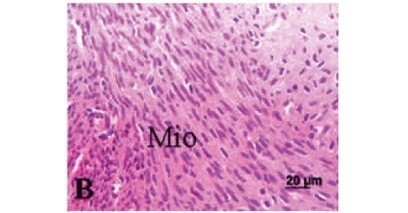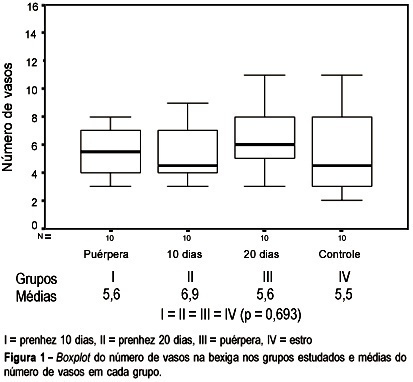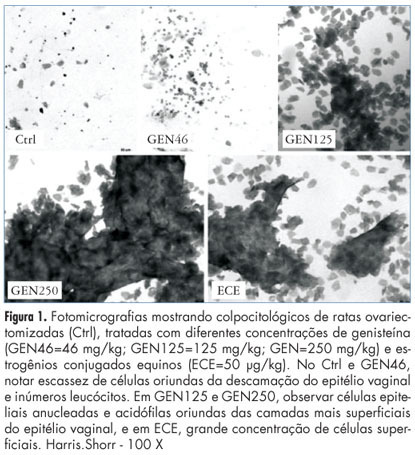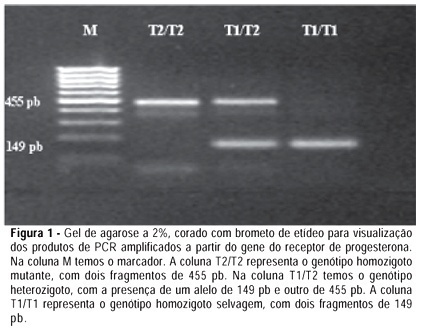You searched for:"Edmund Chada Baracat"
We found (69) results for your search.Summary
Revista Brasileira de Ginecologia e Obstetrícia. 2001;23(4):209-215
DOI 10.1590/S0100-72032001000400003
Purpose: to evaluate a populational sample of the screening proposed by the National Program of Uterine Cervical Cancer Control (PNCC), regarding the following issues: frequency of unsatisfactory cytologic results, cytologic frequency of atypical squamous or glandular cells of undetermined significance (ASCUS, AGCUS), low- or high-grade squamous intraepithelial lesions (SIL), comparing the cytologic results with anatomicopathological results of colposcopically directed biopsies. Methods: through the written, broadcasting television and oral midia, women between 35 and 49 years were requested to have a preventive cytopathological test, to be collected by the authorized public health or other institutions accredited by SUS. The slides were analyzed by the program-authorized laboratories and all those patients from the populational sample from the municipality of Naviraí in the State of Mato Grosso do Sul with cellular alterations were submitted to colposcopy and directed biopsy. Results: the frequency of cytologic alterations of the ASCUS, AGCUS and SIL types was 3.3%, an index that is close to that predicted by the PNCC (4%); the percentage of samples that were unsatisfactory for evaluation was high (12.5%); among the ASCUS, AGCUS or low grade-SIL patients, 27.3% presented intraepithelial lesions of a high grade in the anatomicopathological study; while patients with cytology compatible with high grade-SIL, the directed biopsy revealed that 12.5% presented low-grade intraepithelial lesions. Conclusions: the choice of oncological cytology as the only method for the screening in the program allowed high indexes of false-negatives (27.3%) and of false-positives (12.5%). In the screening of cervical neoplasms, colposcopy has shown to be an important and indispensable method to guide the therapeutical management to be adopted.
Summary
Revista Brasileira de Ginecologia e Obstetrícia. 2004;26(3):213-219
DOI 10.1590/S0100-72032004000300007
OBJECTIVE: to evaluate the effectiveness of the hygroscopic dilator in the colposcopic examination of the endocervical canal in patients with high-grade lesion in the cytopathology and unsatisfactory colposcopy. METHODS: prospective study, including 62 patients with unsatisfactory colposcopic examination and cytology compatible with high-grade intraepithelial lesion. The patients were submitted to dilation of the endocervical canal by means of a hygroscopic dilator. After dilation, the new colposcopic findings were recorded, and then conization was made through loop electrosurgical excision procedure. The incidence of neoplasic involvement of surgical margins was compared between patients with examinations modified toward satisfactory results and those that remained with unsatisfactory colposcopy. In order to compare the incidence of involved margins and the incidence of residual disease, two retrospective control-groups were used: the GinSat group (n = 35): patients with unsatisfactory colposcopy; GSat group (n = 38): patients with satisfactory colposcopy and endocervical atypy. RESULTS: 80.6% of the cases presented satisfactory colposcopic vision after dilation. 80.4% of those presented disease-free resection margins. The incidence of disease-free resection margins in patients with persistent unsatisfactory colposcopy after dilation was 36.3%. Affected surgical margins occurred in 28% of the group that had undergone dilation, 28.5% of the cases in GinSat group, and 31.5% in the Gsat group. Follow-up showed the incidence of residual disease in 7.5% of the patients under dilation, 28.5% in the GinSat group and 28.9% in the GSat group. CONCLUSION: the use of hygroscopic dilation improved visualization of lesions of difficult access to the colposcopic examination, thus permitting reduction in the percentage of residual neoplasic disease in patients with unsatisfactory colposcopy treated with loop electrosurgical excision procedure.
Summary
Revista Brasileira de Ginecologia e Obstetrícia. 2006;28(4):227-231
DOI 10.1590/S0100-72032006000400004
PURPOSE: to evaluate histomorphometric changes in the rat myometrium upon treatment with isoflavones, as compared with estrogens, using histological and morphometric techniques. METHODS: twenty-eight oophorectomized adult rats were randomly divided into four treatment groups: GPropi = propylene glycol (control); GExtr10 - 10 mg/kg soybean extract; GExtr300 - 300 mg/kg soy bean extract; GCee - 200 µg/kg conjugated equine estrogens (Cee). Drugs or drug vehicle were administered by gavage once a day for 21 days. Upon sacrifice, the uteri were removed and weighed. Fragments of uterine horns were collected and fixed in 10% formaldehyde and processed for paraffin inclusion. The histological sections were stained by hematoxylin and eosin and evaluated microscopically by means of an image analyzer to quantify the myometrial thickness and the number of blood vessels and eosinophils. The data were studied by analysis of variance (ANOVA) followed by the Tukey-Kramer multiple comparison test. RESULTS: isoflavones in the concentration of 300 mg/kg induced a significant increase in the myometrium thickness (GExtr300=25.6±5.0 mm) compared to control (GPropi=5.5±0.5 mm). The effect of this high dose is similar to the estrogen effect (GCee=27.5±7.9 mm). In low doses (10 mg/kg), the effect was similar to control. Isoflavones (GExtr300) induced also an increase in the number of blood vessels (GPropi=3.5±1.6; GExtr300=10.2±3.6 vessels/mm²) and of eosinophils (CPropi=0.15±0.01; GExtr300=4.3±0.9 eosinophils/mm²). These effects were comparable to those produced by Cee treatment in GCee (9.2±1.1 eosinophils/mm²). CONCLUSION: a high-dose treatment with isoflavones (300 mg/kg per day, 21 days) elicited an estrogen-like, highly significant proliferative action on the rat myometrium.

Summary
Revista Brasileira de Ginecologia e Obstetrícia. 2002;24(4):227-231
DOI 10.1590/S0100-72032002000400003
Purpose: to evaluate the variations in vascular anatomy by assessing the number of vessels of the proximal and distal urethra, of the vesicourethral canal and of the bladder, during and after pregnancy in rats. Method: thirty female rats, with a positive test for pregnancy, were divided into three groups of 10 animals each: GI - rats on the 10th day of pregnancy; GII - rats on the 20th day of pregnancy; GIII - rats on the 5th day of puerperium; a control group (GIV) composed of 10 rats in the estrous phase. The vessels were stained by the method of Masson and counted with a 25-dot integration ocular, coupled to a light microscope, with an objective of 40X. The studied regions were proximal and distal urethra, vesicourethral canal and bladder. Results: there was no significant variation in the vessel number in the bladder, in the vesicourethral canal and in the proximal urethra during gestation. In the distal urethra of the group IV there were 13.7 vessels, less than that observed in the pregnant groups (20.5 to 24.4 vessels). Conclusion: the pregnant rats had a larger number of vessels in the distal urethra than those in the estrous phase. There were no differences regarding the other sites.

Summary
Revista Brasileira de Ginecologia e Obstetrícia. 2007;29(5):248-252
DOI 10.1590/S0100-72032007000500005
PURPOSE: to analyze the isoflavone and estrogen effects on the postmenopausal quality of life. METHODS: this is a randomized and double-blind study with 79 postmenopausal patients, 12 months of amenorrhea, 40 years old or more and body mass index (BMI) above 30 kg/m². The participants were randomly divided into two treatment groups: GECP received orally two capsules, every 12 hours, one contained 0.625 mg conjugated equine estrogen and another placebo (n=33); GECS received two capsules of 150 mg extract of soy, with 60 mg isoflavone (n=32). Both treatments were administered for six months. The Quality Menopause Specific Questionnaire of Life was applied before and after one, three and six months of treatment. The parameters of gynecological cancer risk were evaluated. ANOVA and the Tukey test were used for data analysis. RESULTS: there was a reduction in the values of the vasomotor parameters after six months of treatment, 1.6±0.8 and 2.4±1.6, compared to before therapy, 4.0±2.2 and 4.2±2.3 in GECP and GECS, respectively. The psychological aspects showed reduction in values after six months of therapy, 2.5±1.2 and 2.9±1.4, compared to before treatment, 3.6±1.6 and 4.1±1.9 in GECP and GECS, respectively. Similar results were obtained on the physical aspects and in the sexual symptoms. CONCLUSIONS: isoflavones may positively act on life quality of postmenopausal women. This effect was similar to conjugated equine estrogen.
Summary
Revista Brasileira de Ginecologia e Obstetrícia. 2011;33(9):264-269
DOI 10.1590/S0100-72032011000900008
PURPOSE: to evaluate the effects of high doses of genistein on the mammary glands of adult female rats. METHODS: Twenty-eight days after oophorectomy, 50 adult female rats were divided into five groups, as follows: a control group (Ctrl), three rats that received genistein (GEN) at the doses of 46 mg/kg (GEN46;), 125 mg/kg (GEN125) and 250 mg/kg (GEN250); one group received conjugated equine estrogen at the dose of 50 µg/g (ECE50). The substances were administered daily for 30 consecutive days by gavage and in the last week of the period of treatment, colpocytological exams were carried out for seven consecutive days. After treatment, the animals were anesthetized, blood samples were collected for estradiol and progesterone determination and the first pair of inguinal mammary glands was removed and processed for histomorphometric analysis. Collected data were subjected to analysis of variance supplemented by the Tukey-Kramer test (p<0.05). RESULTS: the ctrl group and the ones treated with different doses of GEN showed atrophic mammary glands, whereas the glands were more developed in the ECE group, where numerous mammary ducts and alveoli were observed. Morphometry showed a larger area of mammary parenchyma in the ECE group (98.870.1±550.4 µm²* per mm²; p<0.05) compared with other groups (Ctrl=36.875.6±443.4; GEN46=37.001.7±557.4; GEN125=36.480.8±658.3 and GEN250=37.502.8±669.3). The same occurred in the number of alveoli in the ECE group (33.2±6.9* per mm²; p<0.05) compared to the other groups (Ctrl=10.4±2.1, GEN46=11.2±3.1; GEN125=11.6±2.1 and GEN250=12.3±2.3). The estradiol level was higher in the ECE group compared to the other groups (9.4±1.7 pg/mL; p<0.05), whereas serum levels of progesterone were similar in all groups. CONCLUSION: the administration of genistein at high doses had no trophic effect on the mammary glands of rats.

Summary
Revista Brasileira de Ginecologia e Obstetrícia. 2011;33(1):27-30
DOI 10.1590/S0100-72032011000100004
PURPOSE: to evaluate the concordance rate of ultrasound-guided core needle biopsy followed by excisional biopsy in palpable breast lumps, suggestive of fibroepithelial tumors. METHOD: a retrospective study included 70 biopsies with a histological diagnosis of fibroepithelial tumor in 67 out of 531 patients with breast lesions submitted to ultrasound-guided core needle biopsy with a high frequency (7.5 MHz) linear transducer, using an automatic Bard-Magnum gun and a 14-gauge needle. Cases with a diagnosis of fibroepithelial tumor by core needle biopsy or excisional biopsy and with a diagnosis of fibrosclerosis were included in the study. The agreement between the two biopsy methods was assessed using the Kappa coefficient. RESULTS: excisional biopsy revealed 40 cases of fibroadenoma (57.1%), 19 cases of phyllodes tumor (27.2%), and 11 cases of fibrosclerosis (15.7%). The concordance rate for fibroadenoma was substantial (k = 0.68, 95%CI = 0.45 - 0.91), almost perfect for the phyllodes tumor (k = 0.81, 95%CI = 0.57 - 1.0), and moderate for fibrosclerosis (k = 0.58, 95%CI = 0.36 - 0.90). CONCLUSIONS: the core needle biopsy is a minimally invasive method that has "substantial" to "almost perfect" concordance rate with excisional biopsy. Fibrosclerosis should be considered in the differential diagnosis of fibroepithelial tumors.
Summary
Revista Brasileira de Ginecologia e Obstetrícia. 2006;28(5):278-284
DOI 10.1590/S0100-72032006000500003
PURPOSE: to analyze race, parity and presence of the progesterone receptor polymorphism, named PROGINS, as factors related to uterine leiomyoma occurrence in Brazilian women. METHODS: we carried out a case-control study, composed of 122 patients with the diagnosis of uterine fibroid and 125 women without the disease. After recording the clinical data, we collected biological material for DNA extraction, polymerase chain reaction and agarose gel electrophoresis in order to identify the presence of PROGINS polymorphism. Statistical analysis was performed using the non-parametric Mann-Whitney test or the chi2 test, depending on the studied variable. The risk for the occurrence of the disease was calculated by the logistic regression model, providing the odds ratio (OR). The adopted significance level was 5% (p<0.05) and the confidence interval was 95% (95% CI). RESULTS: we observed a higher prevalence of "non-white"women - mulatto and black - (50 vs 22.4%) and nulliparas (23.8 vs 11.2%) in the cases, while the progesterone receptor genotype was more often PROGINS positive - heterozygous or mutant homozygous - among the controls (21.6 vs 10.7%). The OR indicated an elevated risk for leiomyoma related to the "non-white"race (OR=3.46; 95% CI: 2.0-6.0) and the nulliparity (OR=3.30; 95% CI: 1.9-5.6), with reduction in the presence of PROGINS-positive genotypes (OR=0.43; 95% CI: 0.2-0.9). CONCLUSIONS: the "non-white"race and nulliparity were considered risk factors for the occurrence of uterine fibroid in the studied population, while PROGINS polymorphism showed to be a protective factor.
